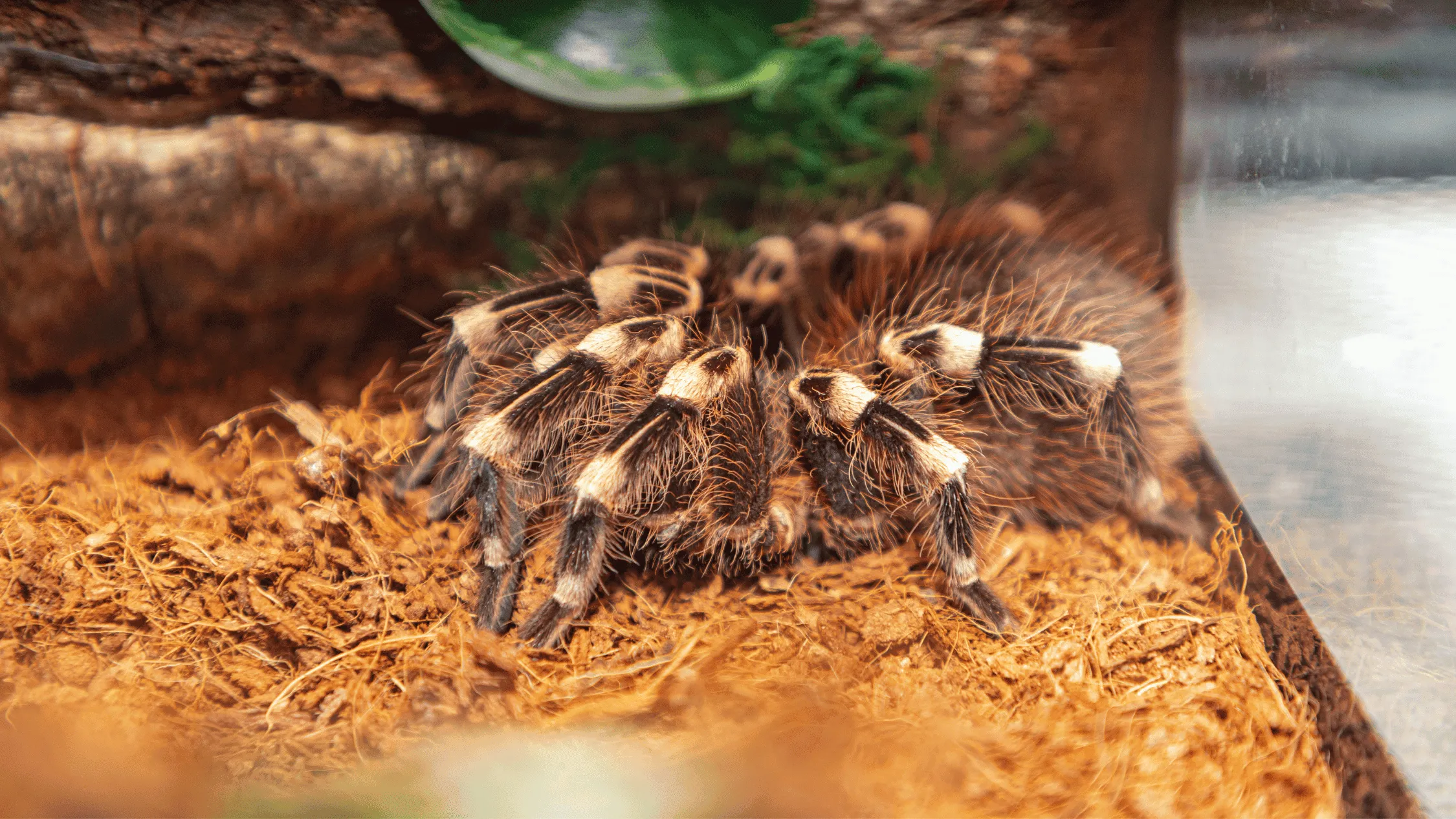Tarantula Pet Essentials The Top 5
Bringing a tarantula into your home is an exciting venture, but it’s crucial to be prepared. These fascinating creatures require specific care to thrive, and understanding their needs is the first step toward becoming a successful tarantula owner. This guide will cover the top 5 essentials for providing a happy and healthy life for your new pet, ensuring you can enjoy the unique experience of tarantula ownership responsibly and with confidence. From enclosure setup to feeding and handling, we’ll delve into the critical aspects that contribute to a tarantula’s well-being, making sure you’re equipped with the knowledge to create an ideal environment for your eight-legged friend. Careful attention to these essential elements will not only enhance your tarantula’s quality of life but also deepen your appreciation for these amazing creatures.
Enclosure The Right Habitat
The enclosure is your tarantula’s home, and its design significantly impacts the pet’s well-being. A suitable enclosure provides security, regulates the environment, and allows your tarantula to exhibit natural behaviors. It should be appropriately sized to accommodate the tarantula’s adult size, preventing stress and ensuring there is enough space for movement. The enclosure’s material should be chosen carefully, and the design must support the required humidity and temperature levels. An inadequate enclosure can lead to various health problems, and it is crucial to think through this step properly.
Size and Material

Size matters when selecting an enclosure; it’s essential to avoid overcrowding or providing a space that is too large, which can stress a young tarantula. A good rule of thumb is to provide an enclosure that is at least three times the tarantula’s leg span in width and length and tall enough to allow for substrate and hiding places. Glass or acrylic enclosures are popular choices because they offer good visibility and are easy to clean. Make sure the material is strong enough to withstand the tarantula’s potential burrowing or climbing activities.
Ventilation is Key
Proper ventilation is crucial in preventing mold growth and ensuring the air quality within the enclosure. The enclosure should have ventilation holes or a mesh top, but make sure the holes are small enough to prevent escape. Airflow is important for maintaining humidity and preventing a buildup of harmful gases, such as ammonia. Regular ventilation, combined with the correct substrate and humidity control, creates a healthier environment for your tarantula.
Substrate Creating the Perfect Environment
Substrate is more than just bedding; it’s essential for maintaining the correct humidity levels, allowing the tarantula to burrow, and providing a sense of security. The right substrate mimics the tarantula’s natural habitat and contributes to its overall well-being. Selecting the correct substrate is vital; it helps regulate the environment within the enclosure, supports the tarantula’s activities, and prevents the buildup of harmful elements.
Types of Substrate

There are several substrate options available, each with its pros and cons. Coconut fiber is a popular choice as it retains moisture well, is relatively safe, and is readily available. Peat moss is another good option, providing excellent moisture retention and a natural look. Some keepers also use a mix of vermiculite and potting soil, especially for burrowing species. Avoid substrates that contain harmful chemicals or additives, and always ensure the substrate is clean and free from pests before introducing it to the enclosure.
Humidity and Temperature Balancing Act
Tarantulas are ectothermic, meaning they rely on their environment to regulate their body temperature. Providing the correct humidity and temperature levels is essential for their health. Improper humidity can lead to molting problems, while incorrect temperatures can affect their metabolism and activity levels. Monitoring the environment regularly and making adjustments as needed is crucial for the overall well-being of the tarantula. This ensures they are comfortable and active, simulating their natural habitat.
Water and Hydration Essential for Tarantulas
Water is as essential for tarantulas as it is for any other living creature. They need access to fresh water to stay hydrated and healthy. Dehydration can lead to serious health problems, including molting issues and lethargy. Providing a clean water source and ensuring it is always available is a simple yet crucial aspect of tarantula care, ensuring they can maintain their bodily functions properly.
Water Dish and Refills

A shallow water dish is ideal for tarantulas, especially slings and smaller species. Ensure the dish is stable enough to prevent tipping and is easily accessible. The water should be changed frequently, ideally every day or two, to prevent the buildup of bacteria and maintain water quality. Use dechlorinated water to avoid introducing harmful chemicals. For certain species, especially those that don’t drink from a dish, misting the enclosure can provide a source of hydration.
Food What to Feed Your Tarantula
A well-balanced diet is critical for the health and longevity of your tarantula. They are carnivores, and their diet should consist primarily of insects. Feeding your tarantula the right food at the correct intervals ensures they receive the necessary nutrients to grow and thrive. The food source should be clean and free from pesticides to avoid harming the tarantula. Proper nutrition is essential for proper molting, growth, and overall vitality. Different species may have slightly different dietary needs, so it’s essential to research the requirements of your specific tarantula species.
Choosing the Right Food
The most common food choices include crickets, roaches, mealworms, and superworms. The size of the prey should be appropriate for the size of your tarantula; generally, the prey should be no larger than the tarantula’s body. Ensure the insects are gut-loaded with nutritious food before feeding them to your tarantula. This enhances the nutritional value for your pet. Avoid feeding wild-caught insects, as they may carry parasites or pesticides. It’s also advisable to remove any uneaten prey after 24 hours to prevent stress and potential injury to the tarantula.
Feeding Schedule

The feeding frequency depends on the tarantula’s age and species. Spiderlings, or young tarantulas, typically need to be fed more often than adults. As a general guideline, spiderlings can be fed every other day, while adults may only need feeding once or twice a week. Observe your tarantula’s behavior to gauge its appetite. If it refuses food, it could be in premolt or may not be hungry. Overfeeding can lead to health issues, so it’s important not to feed excessively.
Handling and Safety Guidelines
Handling tarantulas should be approached with caution and respect. While some tarantulas are docile, others may be defensive and prone to biting or flicking urticating hairs. Understanding the risks and taking precautions is critical for the safety of both the owner and the tarantula. Proper handling techniques minimize stress for the tarantula and reduce the chances of injury. Always prioritize the well-being of your pet by observing their behavior and being mindful of their needs.
Handling Precautions
Before handling, ensure you’re familiar with your tarantula’s species and its temperament. Always handle them close to a soft surface to prevent injury if they fall. Avoid sudden movements, which can startle the tarantula. Wash your hands before and after handling to prevent contamination. Never force handling; if your tarantula seems stressed or defensive, it’s best to leave it alone. Use a soft brush to gently guide the tarantula if necessary. Be aware of the urticating hairs that some species can flick, which can cause skin irritation.
Recognizing Stress Signs

Recognizing signs of stress is crucial to ensure your tarantula’s well-being. Defensive behaviors include raising the front legs, displaying fangs, or flicking urticating hairs. Other signs of stress include hiding constantly, refusing food, or moving erratically. If your tarantula exhibits these behaviors, it’s essential to provide a more secure environment, adjust temperature and humidity, and reduce handling. A healthy tarantula is generally calm, active, and eats regularly. Providing a stress-free environment is a key factor in their overall health and longevity.
Conclusion
Caring for a tarantula is a rewarding experience. By focusing on these top 5 essentials—proper enclosure, suitable substrate, correct humidity and temperature, access to fresh water, and a balanced diet—you can ensure your tarantula lives a healthy and fulfilling life. Always prioritize the safety and well-being of your pet, and continuously educate yourself about its specific needs. Remember, responsible tarantula ownership involves respect, observation, and providing the best possible environment for these fascinating creatures. Enjoy the unique experience of sharing your life with a tarantula.
